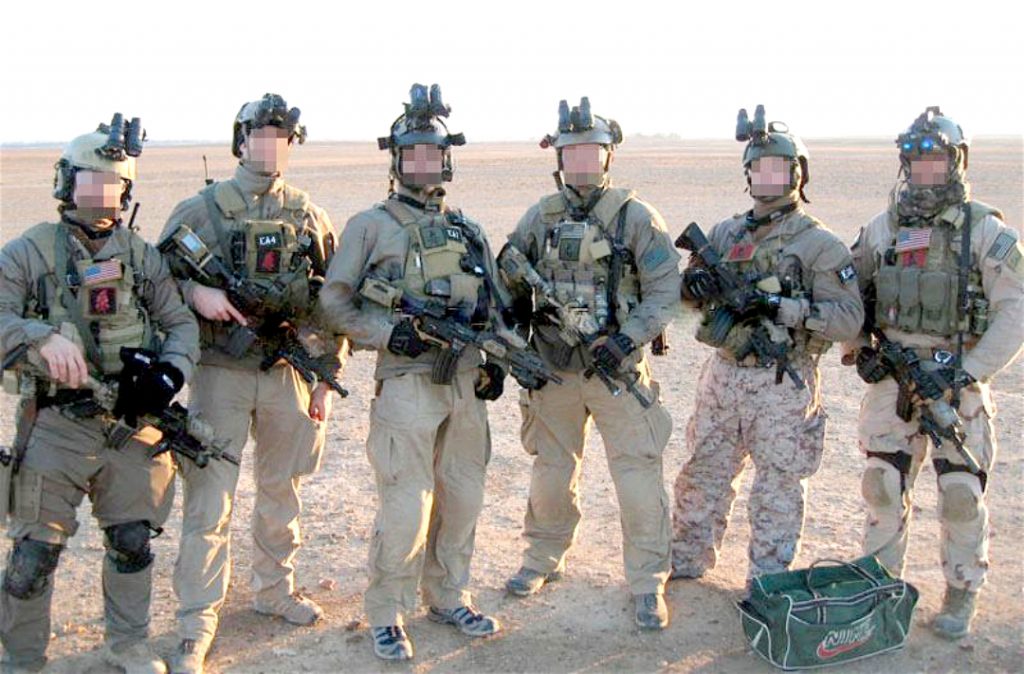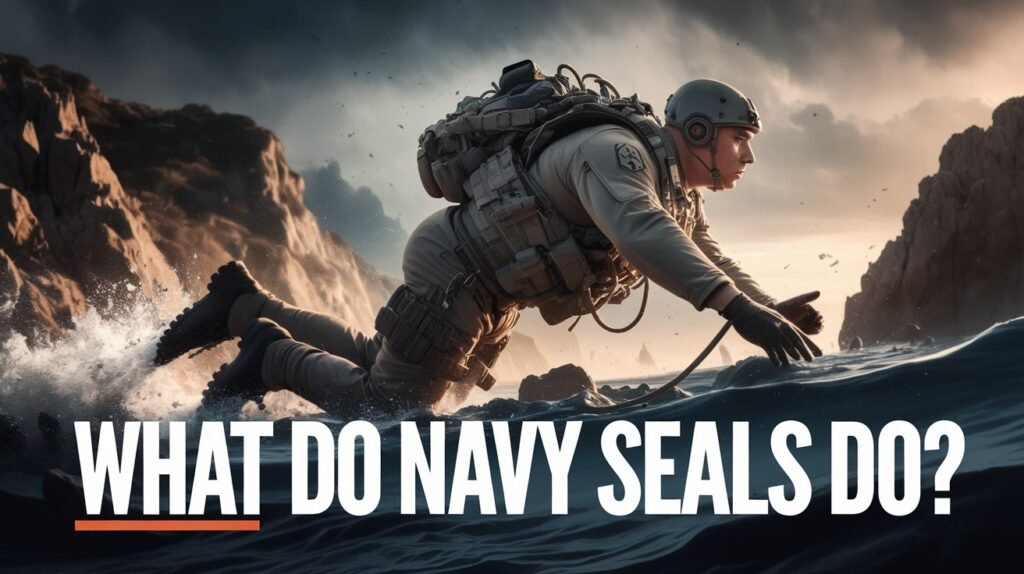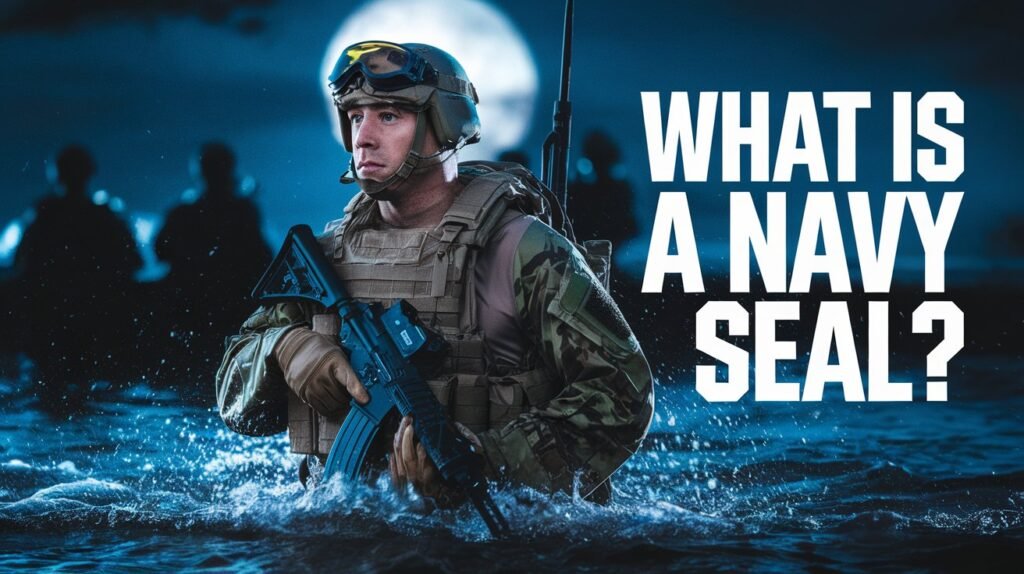WOW! How Navy SEALs Carry Guns Underwater: Gear & Tactics
Ever wondered how a Navy SEAL, already burdened with diving gear, manages to carry a firearm underwater? It's a question that speaks volumes about the ingenuity and adaptability required of these elite warriors. They don't just rely on brute force; they employ innovative solutions to maintain their combat effectiveness in the most challenging environments.
The methods Navy SEALs use to carry guns underwater are a testament to their meticulous planning and specialized training. It's not a simple matter of stuffing a pistol into a pocket. They utilize a combination of holsters attached to their diving gear and strategic strapping techniques to ensure their weapons are secure, accessible, and protected from the corrosive effects of saltwater. The goal is to maintain peak operational readiness, whether they're breaching a target on land or engaging in clandestine underwater operations.
| Category | Details |
|---|---|
| Name | United States Navy SEALs |
| Founded | 1962 |
| Precursor Units | Underwater Demolition Teams (UDT) of World War II |
| Primary Role | Maritime Special Operations |
| Training Location | Naval Special Warfare Center, Coronado, California |
| Notable Training | Basic Underwater Demolition/SEAL (BUD/S) |
| "Hell Week" | A grueling phase of BUD/S testing physical and mental limits |
| Primary Sidearm (2022) | Glock 19 Gen 5 MOS |
| Typical Missions | Direct Action, Special Reconnaissance, Counterterrorism, Unconventional Warfare, Foreign Internal Defense |
| Operations History | Vietnam War, Persian Gulf War, War in Afghanistan, Iraq War, and numerous other covert operations |
| Mental Toughness Techniques | Goal Setting, Visualization, Self-Talk, and Controlling Arousal |
| Nutritional Guidance | First US Navy SEAL Nutrition Guide sponsored by US Special Operations Command |
| Reference Website | Official Navy SEALs Fact File |
The Navy SEALs are undeniably one of the most elite fighting forces in the world, and their arsenal reflects that status. They are equipped with the best weapons available, meticulously chosen to meet the demands of their diverse and challenging missions. In 2022, the Navy SEAL's primary sidearm was the Glock 19 Gen 5 MOS. This pistol stands out for being lightweight, accurate, and supremely reliable qualities that are non-negotiable when lives are on the line.
- Who Is Lara Rose Singer Influencer More Discover Now
- Hyungry Temporary Replacement Ep 3 Why Its A Mustwatch Episode
But the Glock 19 is just one piece of the puzzle. The arsenal of the Navy SEALs extends far beyond a single pistol. It encompasses a range of specialized tools and weaponry designed for specific operational needs. From advanced optics and communication devices to specialized breaching equipment and underwater navigation systems, every piece of gear is carefully selected and maintained to ensure optimal performance. It's this commitment to having the right tools for the job that allows Navy SEALs to operate effectively in any environment, whether it's a bustling urban center or the depths of the ocean.
The reputation of Navy SEALs is built on exceptional skill, unwavering dedication, and daring missions that often operate in the shadows. Their legendary status is not simply the result of rigorous training; it's earned through consistent performance under extreme pressure. While the public often glimpses only the most sensational aspects of their work, the reality is that the vast majority of their operations are conducted with meticulous planning and precise execution, far from the spotlight.
What exactly do Navy SEALs do? It's a multifaceted question with a complex answer. This guide delves into the nature of their operations, shedding light on their arduous training, diverse roles, and the demanding realities of their service. It's a look beyond the myth, into the heart of what makes these warriors so effective.
- Unveiling Sexy Open Looks Photos Videos Lingerie
- Hottest Adult Movies List Find Your Perfect Steamy Flicks
The rigors of SEAL training are legendary, and for good reason. It's a crucible designed to forge individuals into highly skilled and resilient warriors. Basic Underwater Demolition/SEAL (BUD/S) is the first test, pushing candidates to their absolute physical and mental limits. Then there's the infamous "Hell Week," a continuous five-and-a-half-day gauntlet of minimal sleep, constant physical exertion, and exposure to the elements. It's designed to weed out those who lack the mental fortitude to persevere under extreme duress. But training doesn't stop at BUD/S. It's a continuous process of refinement and adaptation, ensuring that Navy SEALs remain at the cutting edge of special operations.
Daily life for a Navy SEAL is far from routine. One day might involve meticulously planning a complex mission, poring over intelligence reports, and coordinating with other units. The next could be spent in relentless training, honing skills in marksmanship, close-quarters combat, or underwater navigation. Still other days are dedicated to maintaining gear, ensuring that every piece of equipment is in perfect working order. And then there are the covert operations themselves, executed with precision and often in high-stakes environments. Every day presents a new challenge, demanding adaptability and a commitment to excellence. The FAQs about what Navy SEALs do highlight this constant variety: Navy SEALs might plan missions, train relentlessly, maintain gear, or execute covert operations every day brings a new challenge.
Do Navy SEALs do combat? The answer is an emphatic yes. They are trained for direct combat and often engage in hostile actions where precision and skill are critical. But their role in combat extends beyond simply engaging the enemy. They are also responsible for gathering intelligence, conducting reconnaissance, and disrupting enemy operations. Their mission profile encompasses a wide range of activities, from direct action raids to hostage rescue operations. These warriors don't just kick down doors; they plan and execute with a precision that would make a Swiss watch look sloppy.
The mission profile of Navy SEALs direct action operations is a study in meticulous planning and flawless execution. Before a single shot is fired, countless hours are spent gathering intelligence, analyzing the target, and developing a detailed plan of attack. Every contingency is considered, and every team member knows their role inside and out. When the time comes to execute, the Navy SEALs move with speed, precision, and overwhelming force, taking the enemy by surprise and achieving their objective with minimal casualties. It's a testament to their training, discipline, and unwavering commitment to mission success.
The path to becoming a Navy SEAL is paved with challenges, but it's not insurmountable. Using Navy SEAL mental toughness techniques and focusing on boot camp readiness, candidates can boost their chances. They can succeed in the BUD/S training program and join the elite Navy SEAL team. These techniques include goal setting, visualization, positive self-talk, and stress management. By mastering these skills, candidates can develop the mental resilience needed to overcome the physical and psychological demands of SEAL training.
What do Navy SEALs do in combat zones? They are trained for a variety of operations, ranging from direct action raids and reconnaissance missions to humanitarian assistance and civil affairs. Their versatility allows them to adapt to any situation and perform a wide range of tasks, from securing a landing zone to providing medical care to civilians. In combat zones, Navy SEALs are often the first on the ground, gathering intelligence and preparing the way for follow-on forces.
The history of US Navy SEAL operations dates back to the establishment of their precursor units during World War II. Originally formed for underwater demolition missions, the SEALs officially came into existence in 1962, born out of the need for a maritime special operations force capable of operating in any environment. Their roots trace back to the elite maritime special operations units of the US Navy, who demonstrated the effectiveness of unconventional warfare tactics in the Pacific theater.
The genesis and evolution of Navy SEALs is a story of continuous adaptation and innovation. From their humble beginnings as underwater demolition teams to their current status as one of the world's premier special operations forces, the Navy SEALs have consistently evolved to meet the changing threats and challenges of the modern world. They have embraced new technologies, refined their tactics, and expanded their capabilities, ensuring that they remain at the forefront of special operations.
The core of SEAL operations lies in their ability to operate independently and effectively in any environment. They are masters of land, sea, and air, capable of conducting a wide range of missions, from direct action raids and reconnaissance patrols to hostage rescue operations and unconventional warfare. Their versatility and adaptability make them a valuable asset in any conflict, and their ability to operate in the shadows allows them to achieve objectives that would be impossible for conventional forces.
Notable missions that defined Navy SEALs are etched in military history. From the daring raids of the Vietnam War to the high-stakes hostage rescue operations in Somalia and the pivotal role they played in the War on Terror, Navy SEALs have consistently proven their mettle in the most challenging and dangerous environments. These missions have not only shaped the SEALs' reputation but have also had a significant impact on the course of history.
The global impact of the U.S. Navy SEALs extends far beyond the battlefield. Their expertise in unconventional warfare and counterterrorism has made them a valuable partner for allied nations around the world. They have trained foreign militaries, conducted joint operations, and shared their knowledge and experience, helping to build capacity and enhance security in some of the most volatile regions of the world. Their global presence and influence reflect their status as one of the world's premier special operations forces.
It's often heard that Navy SEALs are the most elite military special forces in the world, but the question that always remains is: what do Navy SEALs do? They are the go-to force for the most dangerous and demanding missions, operating in the shadows to protect U.S. interests and promote global security. Their training, equipment, and unwavering commitment to excellence make them a formidable force on the battlefield.
The astonishing capabilities of Navy SEALs make them the toughest and most highly skilled warriors of all time. Their ability to operate in any environment, their mastery of a wide range of skills, and their unwavering commitment to mission success set them apart from other special operations forces. They are the embodiment of the SEAL ethos: "The only easy day was yesterday."
What makes a Navy SEAL? The answer is a combination of physical toughness, mental resilience, and an unwavering commitment to teamwork. While physical strength and endurance are essential, it's the mental toughness that truly separates the SEALs from other warriors. They must be able to overcome fear, persevere under duress, and make critical decisions under pressure. And above all, they must be able to work effectively as part of a team, relying on their comrades for support and guidance.
I, like most people probably do, assumed that physical toughness was the secret to becoming a Navy SEAL. In his NYT bestselling memoir "The Red Circle: My Life in the Navy SEAL Sniper Corps and How I Trained Americas Deadliest Marksmen," Webb writes there is a common misperception that to make it through Navy SEAL training, one must be a physical specimen. While physical fitness is certainly important, it is the mental toughness that ultimately determines who succeeds and who fails.
Discover the ultimate guide to Navy SEALs' tools and gain an edge in your tactical pursuits. This comprehensive article reveals a multitude of powerful tools, offering insights into their capabilities and applications. Uncover the secrets of these elite forces' gear and enhance your knowledge of the latest military technology.
Uncover the ultimate showdown in this guide: Navy SEALs vs. other special forces units. Explore the tactical differences, training, and unique strategies of these elite forces. Discover the intense preparation and skills that make them the best. It's a comparison that highlights the strengths and weaknesses of each unit, providing valuable insights into the world of special operations.
The SEAL acronym perfectly encapsulates their versatility: Sea, Air, and Land. This reflects their ability to operate in any environment and conduct a wide range of missions. They are masters of maritime operations, airborne operations, and ground warfare, making them a valuable asset in any conflict.
Navy SEALs also conduct operations in surveillance and reconnaissance, reporting on enemy activity or providing a better understanding of the operational situation. These missions can include tracking of enemy units, monitoring military and civilian activity, and gathering information about beach and water conditions prior to a beach landing. It's a crucial role that provides commanders with the intelligence they need to make informed decisions.
Regardless of how extensive the pockets and compartments a Navy SEAL needs to do their job, the right tactical backpack offers adaptable stowage options by combining a high level of organization with effective waterproofing keeping their gear safe and dry at all times. It's a crucial piece of equipment that allows them to carry everything they need to complete their mission, regardless of the conditions.
Enduring Navy SEAL Hell Week is a testament to the human spirit. Survive Navy SEAL Hell Week with our ultimate guide. Explore grueling challenges, preparation strategies, and inspiring stories from survivors. It's a journey into the depths of human endurance and the power of the human will.
Unveiling the grueling nature of Navy SEAL Hell Week, the notorious training chapter is a cornerstone in shaping elite Navy SEALs. It's a trial by fire that separates those who have what it takes from those who don't. It's a test of physical and mental endurance, and only the strongest survive.
Deuster, of medicine in Bethesda MD, was the author of the first US Navy SEAL nutrition guide sponsored by US Special Operations Command, and because of its success, was commissioned to update the nutrition guide for the United States Special Operations Commands (USSOCOM). Deuster, a certified nutrition specialist, has conducted research in the area of human performance optimization, focusing on the impact of nutrition on physical and cognitive function. Her work has helped to ensure that Navy SEALs and other special operations forces have the nutritional support they need to perform at their best.

This Navy SEAL/SOF Combat Gear List has several items civilians can use

What Do Navy Seals Do? Duties, Missions & Operational Insights

What Does The Navy Do Roles, Responsibilities, And Operations